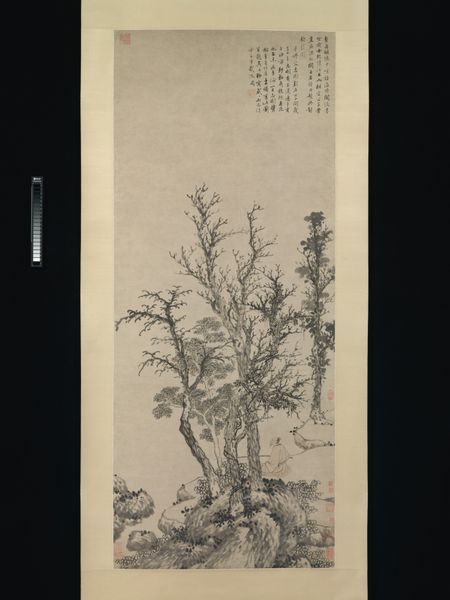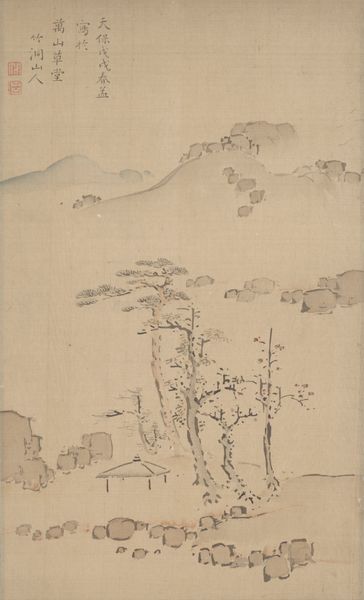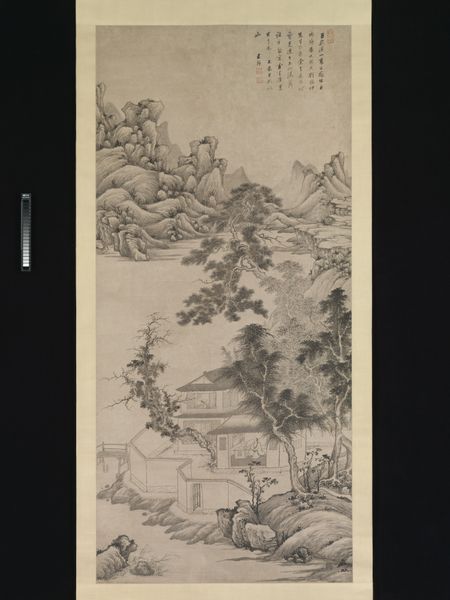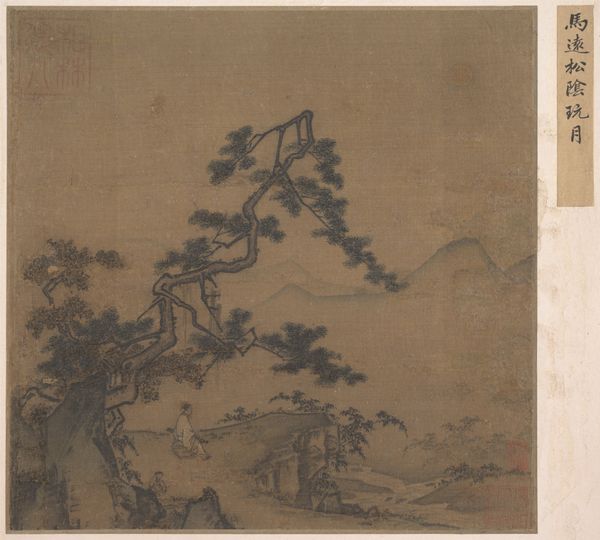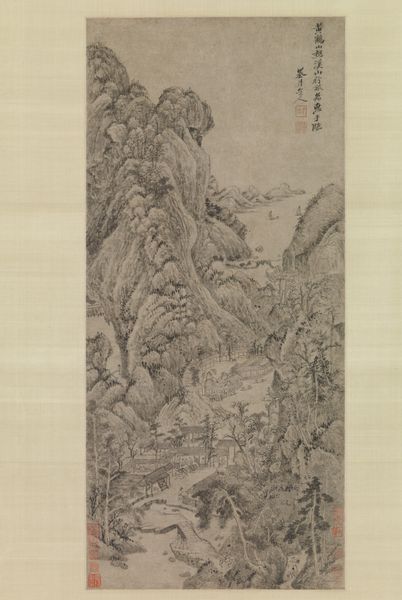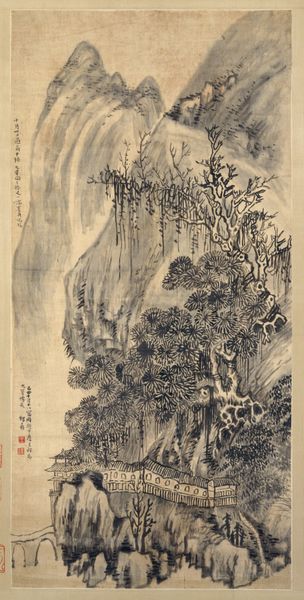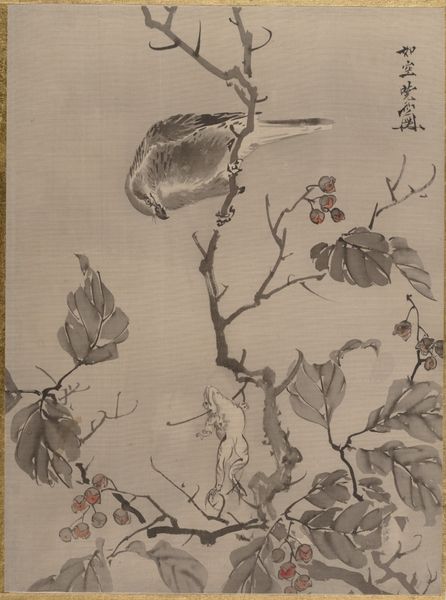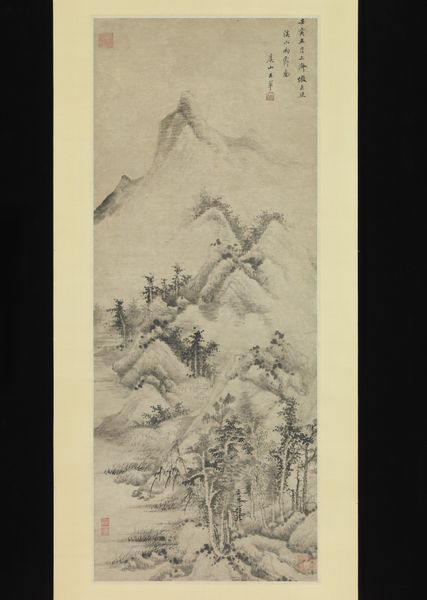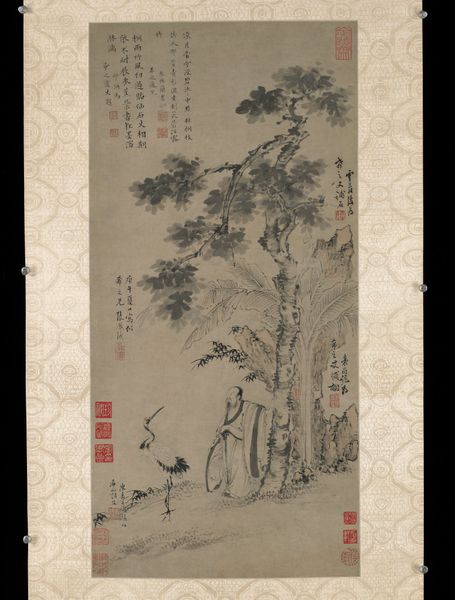
painting, fresco, ink
#
tree
#
medieval
#
ink painting
#
painting
#
asian-art
#
landscape
#
fresco
#
21_yuan-dynasty-1271-1368
#
ink
#
calligraphy
Dimensions: Image: 26 3/4 x 13 1/2 in. (67.9 x 34.3 cm) Overall with mounting: 91 1/4 x 21 3/8 in. (231.8 x 54.3 cm) Overall with knobs: 91 1/4 x 25 1/8 in. (231.8 x 63.8 cm)
Copyright: Public Domain
Editor: We're looking at "Red Cliffs and Green Valleys," a landscape painting done between 1357 and 1377 by Wang Meng. It's an ink painting, and the overall feeling I get is one of solitude, like the figures are really immersed in their own world, yet exposed and somehow part of something far bigger. What stands out to you in this piece? Curator: What intrigues me is how this painting reflects the scholar-artist's yearning for retreat from a tumultuous society. Consider the Yuan Dynasty under which Wang Meng lived. It was a period of Mongol rule, and many Chinese intellectuals felt displaced and alienated. Do you see how the intricate brushwork, especially in the trees and rocks, creates a sense of density and almost claustrophobia, even in a landscape? Editor: I do, now that you mention it. It's not the idealized, airy landscape I would have expected, given that the scholars wanted to leave public life behind. I’d assume they sought serenity! Curator: Precisely. But consider that even in retreat, these scholars were still engaging with a specific political and social reality. The "busy-ness" you see could be interpreted as a visual representation of the complex inner life of these intellectuals. Their retreat was never total, but an attempt to maintain integrity. The act of painting itself, the very inscription of calligraphy, can be read as resistance, or at least a careful negotiation within the established order. Editor: That reframes it completely! I see the density as a reflection of inner turmoil now, a landscape of the mind wrestling with larger societal forces. Curator: And note the gaze of the scholar figures; there are other small figures as well. Are they observers, participants, or critics in this carefully constructed scene? Consider that for later! Editor: Thanks. I'll never see these quiet landscape paintings the same way. Curator: That's the power of historical context! It reveals the intricate relationship between art, individual expression, and collective experience.
Comments
No comments
Be the first to comment and join the conversation on the ultimate creative platform.
